From the study material:
“Look back over your sketchbook and learning log so far and reflect on what has shifted in your thinking. For this assignment, you will create a studio work in the media of your choice that draws from what is located outside of your direct experience. So, like Derrida, you could try to create from the experience of inhabiting a different gender, or the work could emerge from
research about a specific current or historical event. Reflect on the process of researching and making the work. Are there some things that are easier to embody than others? What does distance add/take away from the work?
“0r...you can create a work in which you approach your materials in a New Materialist way, bringing awareness to the two-way interactions that occur between yourself and the materials and processes that you work with. Does thinking about material and intention in a vitalist way change how think about making work and what you create?”
Show the artwork to someone without initially telling them anything about it. You may decide to give it a title, which you could share with them. First, allow your viewer to respond and then discuss the work and the process of making it with them and record this in your sketchbook.
Record your thoughts and observations as you create your work in 500 words. Send all the work for Assignment three to your tutor.
Speaking as another
Attempt to use a New Materialist way – my planning and thoughts
I see New Materialism filled with complex ideas that I might struggle to explore in my art practice. Here is an ontology which is concerned with the nature of ‘being’, in this view I will attempt to be object oriented, to understand the being of objects, without imposing my subjectivity. I am not sure if I am understanding what I am about to present visually, but I feel the process can be a learning experience which challenge existing ideas around experience structured by language, (being conventional) versus believing in an autonomous world which exist independently in my mind. I will not do a performance piece, but by looking at my work whilst I work, I will be a viewer as well, thus perform a role of a viewer. I need to not privilege human subjectivity.
I read ideas of Elizabeth Grosz, which convinced me to consider my materials in a different way. (Chaos, Territory, Art, 2008) She considers that life emerged from something non-living (Darwinian) a process of bodily form taking that relies on the form-taking qualities of inorganic existence. Life protracts, extends and transforms some of the qualities of inorganic matter, into its own organic conditions; and in turn, life adds to materiality, the conditions of virtuality or becoming-otherwise that the material universe already contains, but cannot directly express. (Grosz, 2012, p. 2) I will also look at Deleuze, and took out my book, Logic of Sense to consult and discover and deeper layer of understanding materialism, I am comfortable to conclude that for Deleuze every individual organism and speci is unique – the world is populated by individual singularities. I am concerned about how the world around me affects me and how I affect the world – I want to consider, take serious the (possible) impact if we take responsibility for what this effect caused by our (humans over time) actions can be. I also wonder if we still look to the past to understand the present. As an artist I will look at techniques of other painters and implement it.
I hope to become more clear about why I paint. I am a late comer with a few years of painting experience. I use my studies to inform myself as an art historian, a theorist and practitioner, my brush strokes and painterly choices become my hope to engage and express. I am aware of a responsibility to stay open to viewer experience and influence, by also seeing myself as a viewer. I am drawn to how our relationship with things is influenced by culture and feelings of loss/despair/disconnect.
I decided to continue ideas of cabinets of curiosity to explore this possibility that an artwork is more than text and is about choices of materiality – the medium I choose to work with, like how I attend to it, and work with it. I do not want to privilege the image above the object. I want to ask questions about how my artwork, choices I make whilst making it, consider my own transformational process with art and the making of it. In this way I hope the final artwork, the assignment, will be seen as the showing of the (my) work of the work of art. During two separate group meetings with students and tutors of OCA over the last few weeks, I was drawn to concepts of exploring our relationships and connection with things on a cultural and socio economic way. My first two attempts was collage. In the Group meeting called Contamination /Curation, led by Brian Eccleshall we were placed in sub groups and were challenged to come up with an idea of exhibition and curating our works. I was influenced by Joanna Whittle’s work as well as the work ongoing in the studies for this assignment. (Joanna Whittle current exhibition: Between Islands at Portland Gallery, London)
Materials for the painting project was chosen – oil paints, a Belgian linen canvas, size 35cm x 36cm and the plan to attempt a small scale painting of an upright travel suitcase, which can also be re-used or changed into a cabinet of curiosities. I have in mind, as with Alice in Wonderland, that the effect of using small, will draw the viewer in, hopefully to a place where mind will have to find new ways to journey inside the space. Reading about my found object, a Louis Vuitton travel case, which would pose as the cabinet for my curiosities, I found it remarkable that it started as a family business with an inspirational rag to riches story which started with the founder making trunks and making a breakthrough by having a rich and influential client, the then French Empress, Eugenie, who was impressed with his workmanship. A Guardian article (Guardian 2004) about a published book discussed that the author found that the owners, being focussed on their survival, decided to support the Right Winged Petain government during the second world war. This is now history, out of public debate, the family members who supported this decision died and the company values are certainly tolerant and diverse today.
Over the years fashionable figures like Coco Chanel, Hélène Rochas, the Rothschild family all sported Louis Vuitton luggage and currently famous people, like movie stars, sports heroes also like to show their support of the product in marketing campaigns of the brand. During the recent years the storefront window displays became part of the Vuitton art form, as well as hosting artists inside and using artists to partake in designs. Then I read this: “Fast Forward to the 20th century Louis Vuitton faced off with Danish art student Nadia Plesner in 2007 for allegedly infringing on their intellectual property rights using what appeared to be a representation of one of their designer bag in an illustration entitled, “Simple Living”.” (alux.com) Below is her Ted talk about the whole saga.
I used the Padlet app to keep a visual diary of my process. (link to padlet: ) I wanted to understand why padlet was created, this is what my google search brought up: Founded in 2008, Padlet’s founder and CEO, Nitesh Goel proclaimed it “the easiest way to put stuff on the web.” The tool attracted users with a simple interface that allowed users to drag and drop files from their desktop and add links from the web onto a web-based canvas (called a “padlet”).Apr 4, 2018
On Padlet home page: “Padlet is an Internet application that allows people to express their thoughts on a common topic easily. It works like an online sheet of paper where people can put any content (e.g. images, videos, documents, text) anywhere on the page, together with anyone, from any device. Think of it like a multimedia friendly, free-form, real-time wiki.” I like to see Padlet in this case as a create enabler to work on my assignment.
My assignment, the work process
The work is called, Many roads to R(H)ome. Work on Belgium linen in oil and mixed medium. My statement about the work:
I love journeys, imaginative and real, it brings new perspective and wonder about the diversity of life. By experimenting with my own relationship with things, things and memories became participators. The same road, but many outcomes till you reach home (rome). You never know which road leads to home, until to start to look for it – in life we try to solve things. A journey can help.
I start with the idea that material and intention are both vitalist. In my intended work process I hope to show how I think, investigate, make, discover and create. I would like to keep my tutor’s suggestion that I concentrate on material investigation and centering myself in this work and………. not worry to much about the audience at this stage. I do not think the work is about narrative, but about my processes of making and thinking whilst making.
I chose a portrait view with the object placed in the centre, but facing outwards – to help the viewer see and interact with all the objects I plan to put into it.
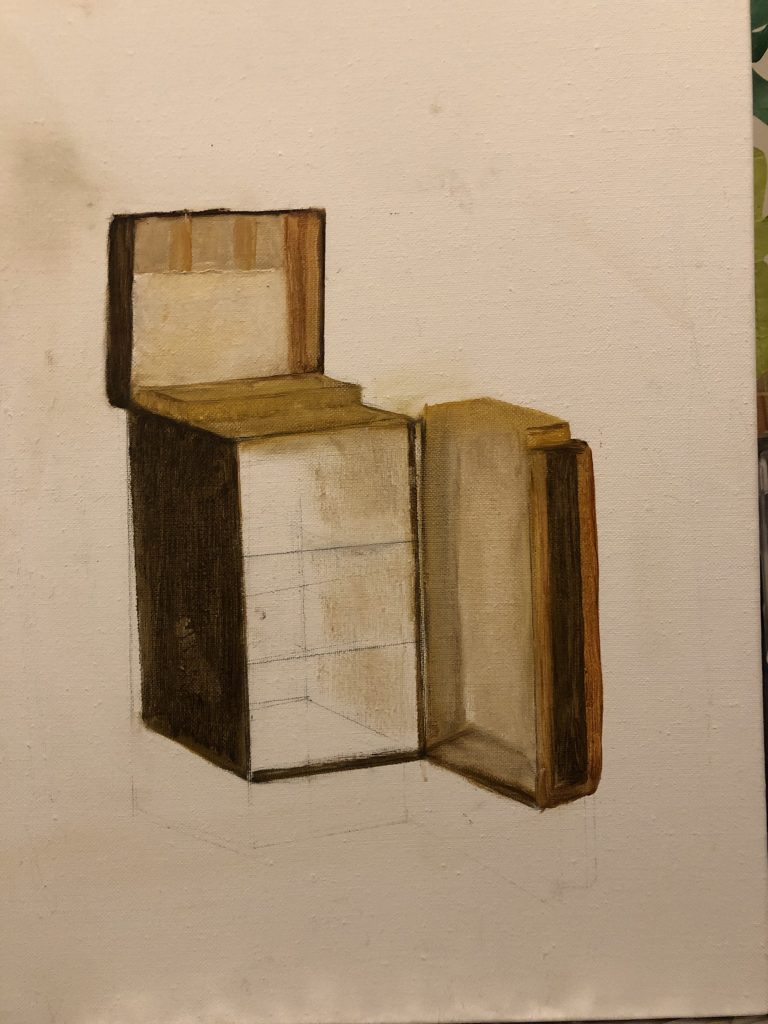
I am mainly painting with Yellow Ochre and Burnt Umber, mixed with OMS and Liquin. It was important to find form and depth with tonal washes and considering finding things for filling the cabinet. Ideas of contradiction was crossing my mind – when collecting we displace things, (sometimes even steal or take from a rightful owner…colonialism/power) curiosity versus interest, looking versus seeing. Can it even be thinking about art as a commodity (growth of current art market) versus art as a deeper personal experience of interconnectedness?
I decided to show the detail on the LVuitton branding on the suitcase – for the company it was important early on to establish a luxury brand, whilst I saw a challenge for creating a repetitive pattern on the belgium linen canvas. In order to make the pattern, I scratched it out from the ground layer with an inkpen tip. Can I say that memory and history is a reminder and participator of economic and political context in this object I chose? I do feel so. Jane Bennet reminded that Spinoza speaks of “the capacity to affect and be affected”, a power intrinsic to all bodies and linked to the generative power of Nature. She refers to such a confrontation as: “Sometimes a nonhuman thing will become an extension of a human body, and sometimes vice versa”. (Bennet, 2015: 96)
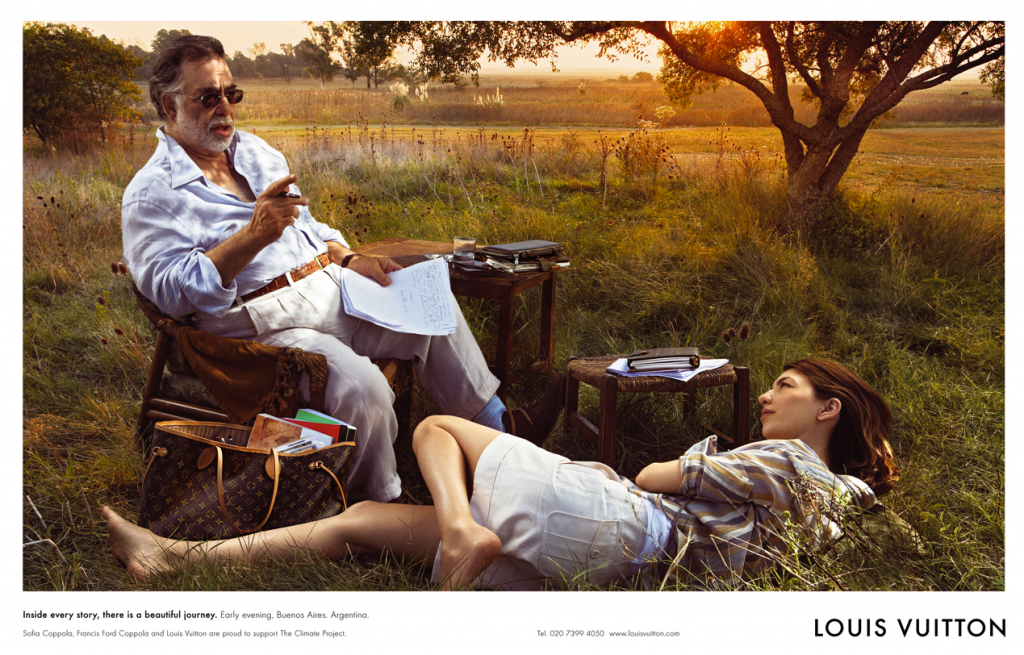
When the shelves came in it looked like an upcycled product – new form (cabinet) emerged and their is a history of it being old, another person’s displacement, my found. After more reading it seems my item is called a wardrobe case, similar cases was used by the Duke and Duchess of Windsor to pack their attire during trips. Looking at the product branding over the years I saw that they relate many travel/journeys to exotic places, such as the African landscape and natural environment, with activities such as camping, driving open 4×4 vehicle and spending time away from people. I would like to place my cabinet in nature – among the grass. My canvas was by now blotched with marks or re drawing lines of the form of the case and I used a washed combination to create the background and placement.

Can one say that the objects in the painting had a previous life? I would think so – the cabinet is upcycled’ to become a cabinet for curiosities. I also wonder if they could become artefacts – constructed by paint from ideas and memories. Taking the role of the curator in this cabinet, I made decisions with regards to arrangement within the space. They remain fragments of bigger life outside the cabinet. In archeology finding a fragment (artefact?) will give you a clue to understand – I do believe these objects will give the viewer some context to understand the making of the painting, which I think in this case, started in chaos, ideas developed as I chose the suitcase form. I also think about power within this process – in a way I became the curator of these objects into my own display, and will need to trust my choices and be open to viewers interpretations and reactions. I do not see the objects forming a unifying theme or focus, but by being put together, they became a group of memories – meaning was created by making a collection of objects.
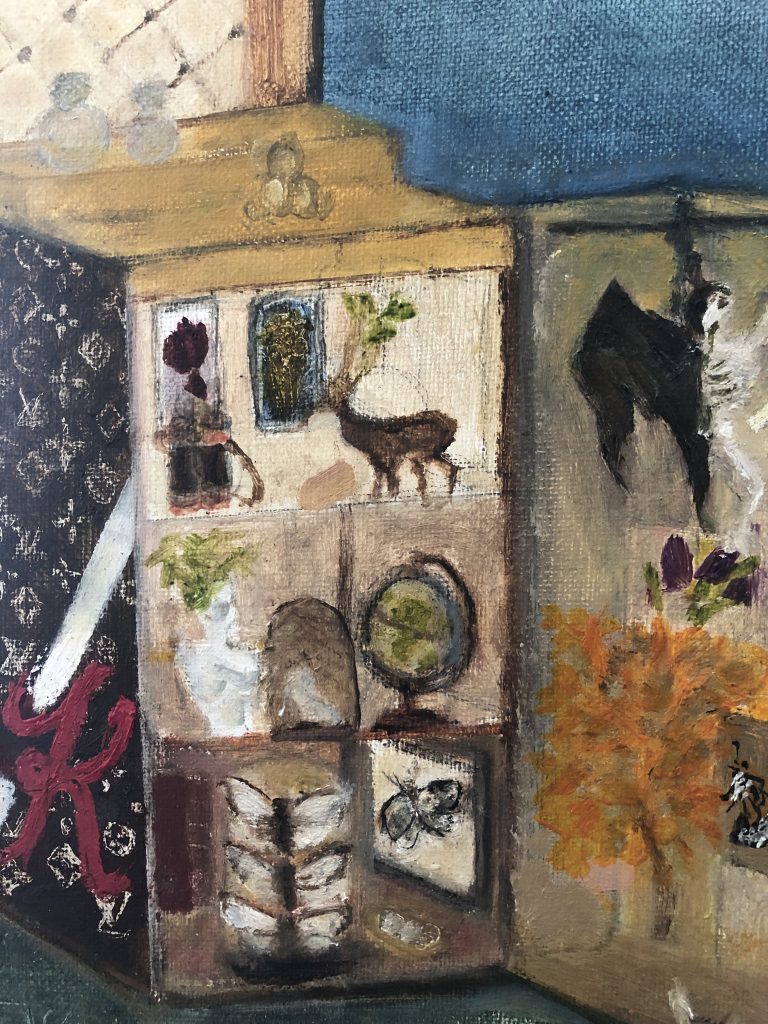
I had to scale every object down, use small brushes and small dabs of paint/mixed into colours; working with contrast of light and dark to give form to shapes was a struggle. I worked slow, little painting at a time, layering to give them texture and form, with just enough OMD and Liquin and work my way with small brushes and movements, which at times felt timid and unrevealing. The scale of the objects became intimidating and I had to change my painting style and work slowly. I moved the canvas to a table, or on my lap. I wished I had a magnifying glass – things went wonky and felt wrong. I wanted to start over again, but the group focus to present on a specific date kept me going – rework, adjust. I came to enjoy the viscosity Liquin gives the paint and prefer it to stand oil, going back and use thin layers of glazes.

looking at ways to create more transparent wings – white mixed with liquin and OMS on the coloured grounds proved to be a better choice, layers could then be added 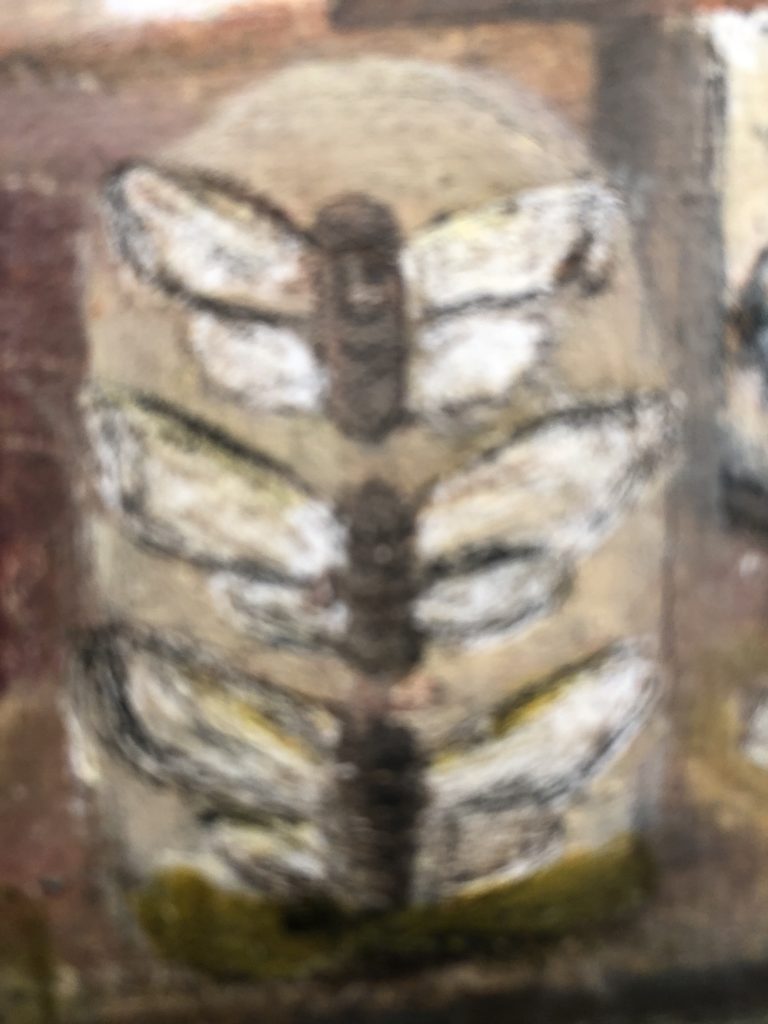

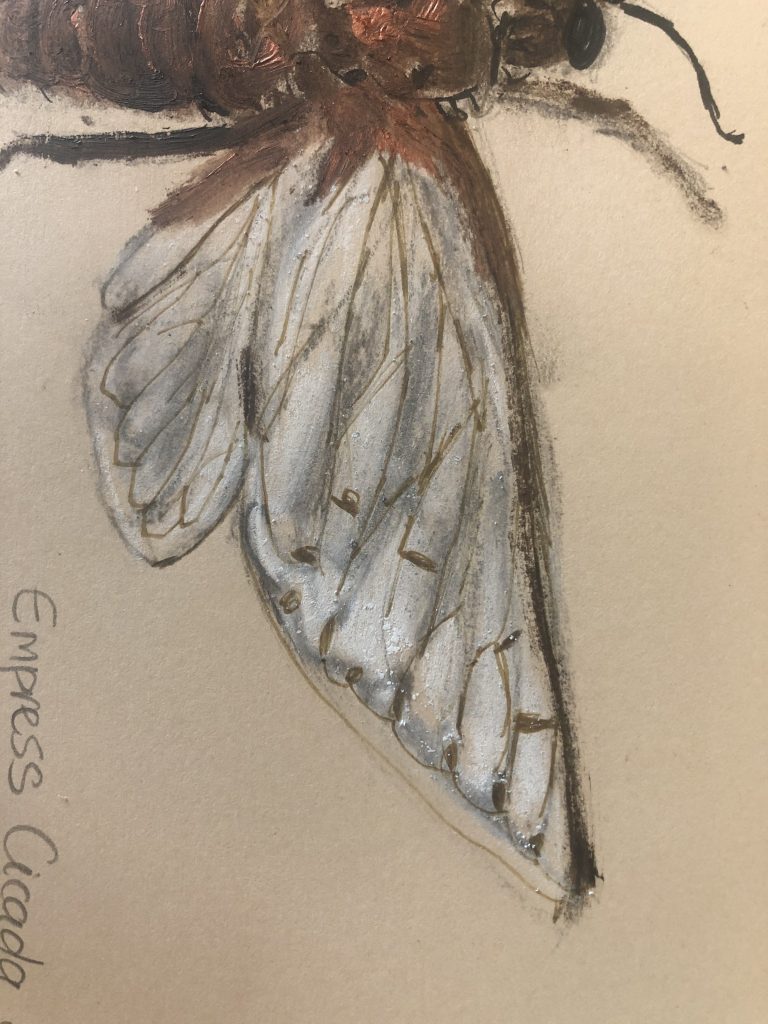
sketch in paint and charcoal of empress cicada

water colour painting 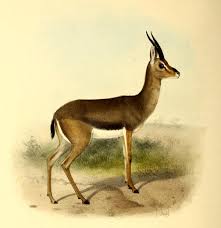
Google search for Gazella subgutturosa Marica – found as replacement image for my memory object
A list of the objects I ‘placed’ in the cabinet, with some context will be shown, this is about my practice and part of the intuitive process that grew into memories, which started with the ‘gathering’ of objects .
Material objects seen in work
- Canvas made from linen and wood, 35.5 x 36cm. I have previously painted portraits on linen (un gessoed) and love the texture and how it absorbs oil paint.
- Oil paints. own source
- Suitcase – found images of travel cases. In our storage of ‘our furniture’ in SA I have a leather travel case I inherited from my mom.
- Paintings hanging inside, three are flower studies from photography student images in a study group and two are my idea as I love butterflies. It is the Brown veined White I know from South Africa, as well as a ‘common’ Monarch. A monarch is called a ‘wanderer’ in Australia, and the Brown veined Whites go on amazing migrations during early summer – I remember finding hundreds of them in my garden around Christmas and New Year in South Africa.
- Three Clear-winged cicada insects in a glass cloche – found image on internet search. After a Google search I read that this is the largest species of cicada with a head-body length of about 7 cm and a wingspan of 18–20 cm. The evocative song of a male cicada, which he makes through its tymbals, (which are drum-like organs found in their abdomens), is associated with a warm African day in the bush. I found a website where I could listen to these songs/sounds, and read that the loudest one, Brevisana brevis, generates 106.7 decibels.
- old books – I love real books. Do one travel lighter with an E-book?
- Old glasses – image on internet, it belonged to John Lennon, was stolen and then found years later.
- Clay bust of a woman – pinterest image
- Binoculars – google search for antique style. I never go on a visit to nature without my Zeiss binoculars
- Deer with plant in head – google search. I had a little porcelain deer my grandmother gave to me when I was around 12 years old, it came from her ‘display cabinet’ – it was lost after my mom died, dad remarried and many things became displaced.
- Globe – google search for antique item to remind of being on this world, a shared experience.
- Budgie in cage – idea to paint after I read on Instagram about trade of parakeets and budgies people keep in captivity/confined spaces, it is a native of Australia
- Bat hanging – connect with Covid19 pandemic and how viruses relate to genetic evolution over time
- Orange coral – BBC program on oldest known animal in the sea, coral leiopathes or the deep water black coral
- Monarch butterfly dried specimen represented with paint
- Dried milkweed seedpod represented with paint
- Perfume bottles and photo frame (my kids and husband) on top – my own
It made me think about the things, as they grew out of my reading and research – it feels as though I created an archive of loss and memories, some real and other imagined. I am thinking about what these objects do – what power it has as material bodies and forces. The Cicadas in the glass cloche had to become transparent in glass, my reworking, I have lost the transparency and resorted to scratching off previous layers of paint. On my desk lies broken wings of a Monarch butterfly and a moth – I am so aware of the fragility of those wings, but then I also remember that it is those colourful scaled wings that, in the process of evolution, made the species to last over a long period of time (take on colour of the ‘stronger’ / blending in) Monarchs are hardy and very adaptable, real survivors and love Milkweed plants – for some of us weeds. Scientist talk about the ‘butterfly effect’ – understanding the effect of tiniest difference, unpredictability, a hallmark of all chaotic systems. Elkins describes the studio as a kind of psychosis. The Monarchs feed on the poison in these plants, some things can be so unpredictable in the painting process.

milkweed 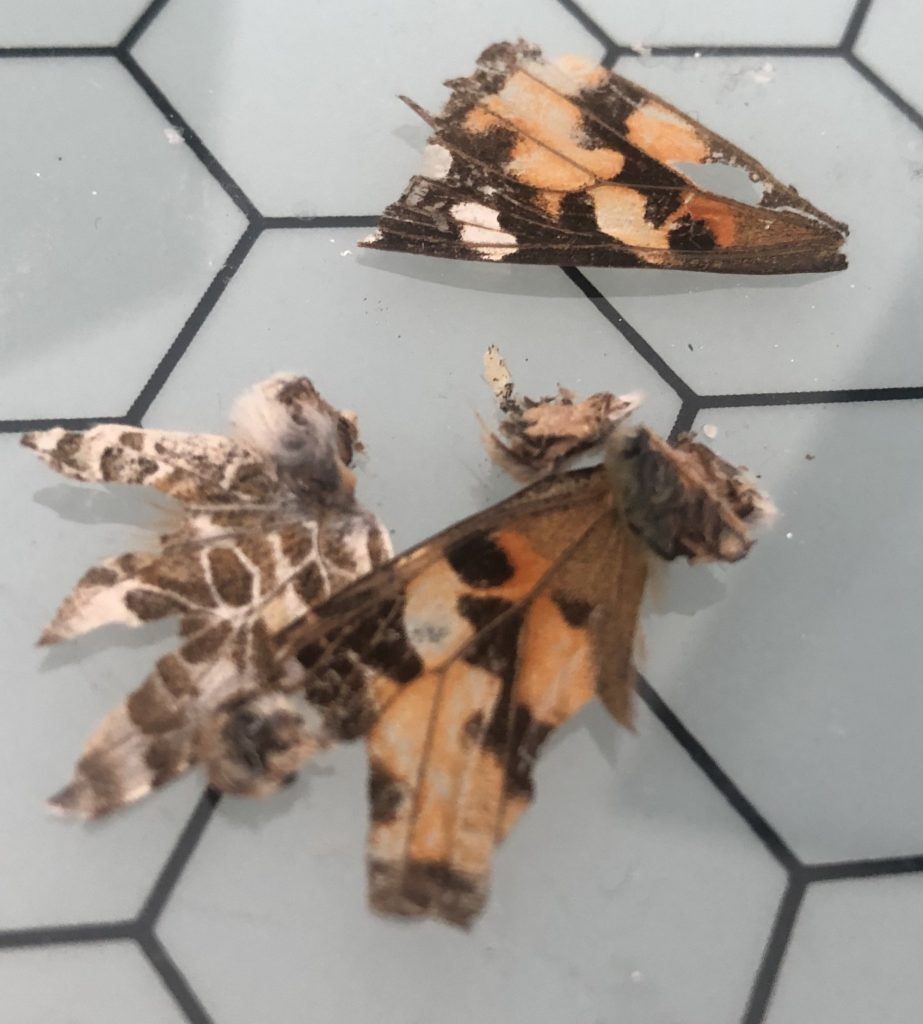
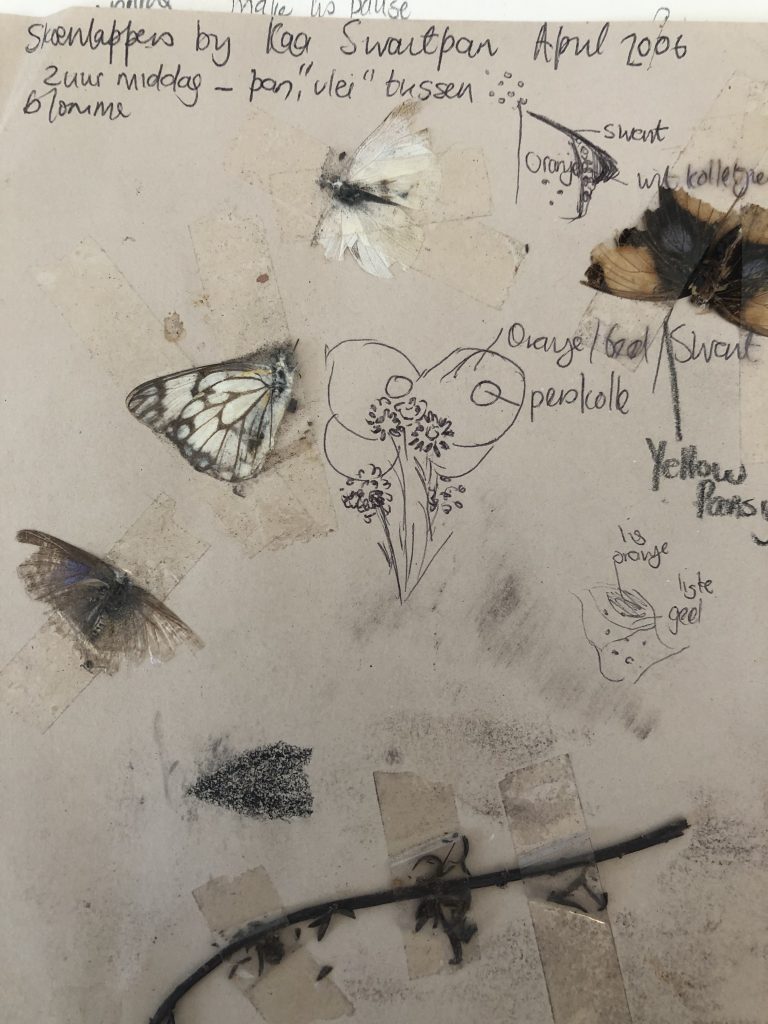
I made a voice recording of what I think this work is about https://vocaroo.com/embed/1aR7Z70nRtEE
View on Vocaroo >>
Recently on Instagram I read how Joanne Whittle contemplates about her latest exhibition, Between Islands, which is closing soon. (1st November 2020) She plans to share her most favoured items from ‘the collection’ on Instagram in the next few days and writing that she feels wistful about it coming to an end and having convinced herself of its authenticity and that it feels if it should stay, like in an anteroom, a forgotten chamber which is accidentally visited by introverted and solitary visitors – her own feelings on a rainy day and being in a quiet place and in the presence of these objects. (Instagram:Last Posts) She continues writing about these objects waiting for the next visitor, whilst in absence, and being “strange remaining things”, able to “grid their resonance around them” being “stubbornly themselves”, even when (the curator/ she/we?) rearrange or re-narrate them. In her last sentence I feel she gives these objects more significance and place: “And I love nothing more than that aloneness around them.”
Conclusion –
- I feel aware of a two-way interaction and matter that became expressive and more on the foreground.
- I consider these objects as experiments with material, rather than posing to be a representation of the real – some paradox here?
- I do consider paint as part of the annihilated matter , which is also what I consist of.
- I believe unpredictability can be used to be creative in my work process – there are so much more possibilities.
- I am asking myself how do I meet these objects directly, is there any humanness, sensibility, or need that is ‘visible’; it that what I am relating to – I conclude that it is found in a reflection on disconnect, huberism, self absorption, power of (money) artificial world.
- As a viewer I think the objects share a moment in time.
- The viewer can be reminded of our own cultural baggage and histories of materialism and how we interact.
- I also think a viewer’s perception of the work can be lead by the way material is used and displayed.
- I believe we need to rethink our consumerism of things and consider the value in terms of interdependency and mutual dependent relationship with everything (the whole), not just certain preferred things.
- I do believe I am more mindful of things after this exercise and process
- I discovered new artists like Joanne Whittle and Janet Lawrence who inspired me.
- I became more clear about why I want to paint and develop my skills.
I plan to share my painting with a few people before I post this assignment for my tutor to view and assess.
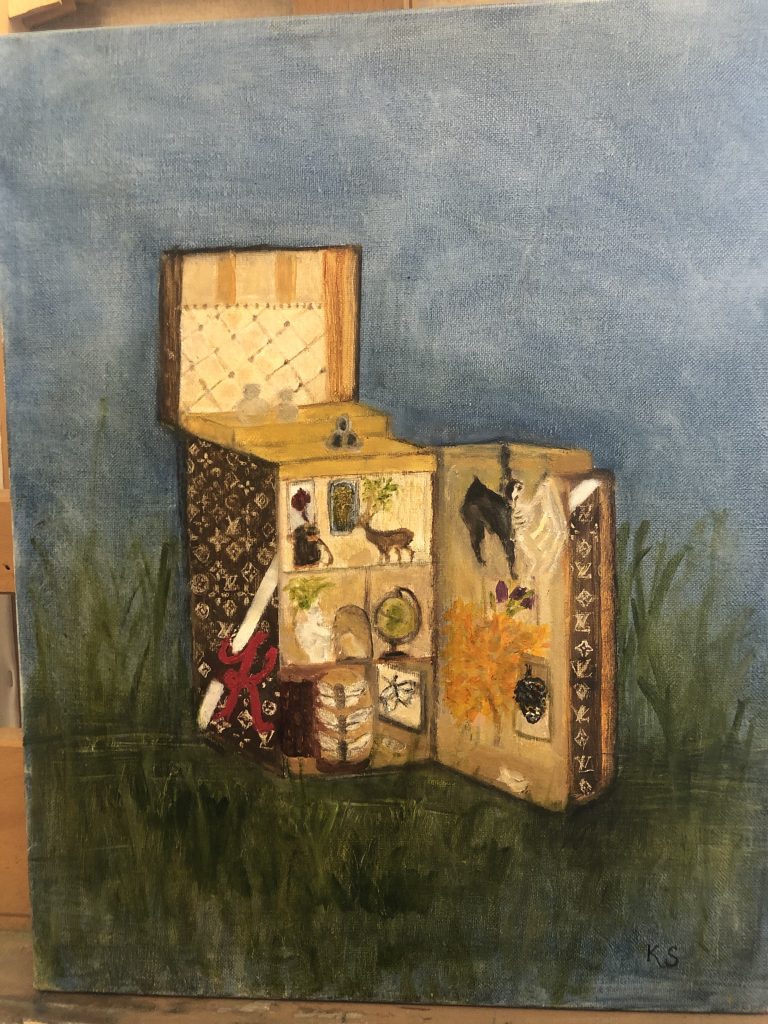
REFLECTION ON ASSIGNMENT
Thinking about the topic, Speaking as another , I am reminded of the course work and want to reconsider how I view ‘self’ within the idea of who has power, whose voice is heard and to whom it is addressed. Using written language I could question certain methods, critique it. I read R Barthes calls this ‘ to call into crisis’ (Barthes, 1989:319), so to continue, I could then write about my research, and this becomes the true results. Using above assignment as an example I discovered the power of things, and not just me, I do think the voice of those ‘animate’ things were also heard and listened to by me during the process of making, choices I made and outcomes.
I feel the need to ask if engaging the materiality of the process was enough to make the work relevant to New Materialism…I would prefer “Posthumanism”. I am aware that my intentions played a role in how the viewer will read the work. I followed and alternative route by sharing the working/thinking/acting process of painting. I do think my objects became performers and that the work gave agency to their existence which can be connected to experiences and happenings in life. I found this a refreshing opportunity to question agency.
I had a short discussion with artist J Whittle on Instagram: I asked her if she looked at her work process as an interaction with thingness and the powers in this relationship. (Instagram message on 22 October 2020 at 4;18pm) She answered: “Yes I definitely think about the thingness of things. Objects have such resonance, even those with invented histories” (Instagram message on 22 October 2020 at 7:30pm
The feedback
My one artist friend saw an understanding of me, how I look and how I relate to things. She heard my serious voice in the work and felt inspired by my writing and the ideas of new materialism. She valued my connection with memories and said she knows me good enough to think it came from an authentic place. Below is work she showed on her FB page after she read my assignment and discussed the work with me. – she gave me permission to share it here.
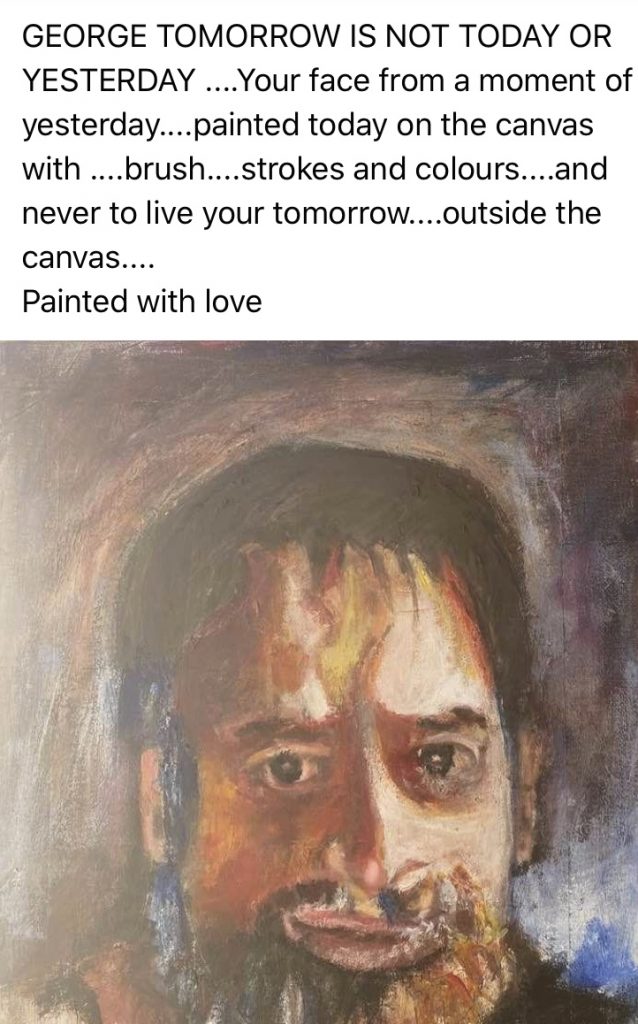
My husband saw the possibilities of connections and meanings which could be endless. For him the seemingly unconnected items in the world of new materialism all seems connected, given the almost evolutionary source or genesis of every item. In this sense ‘the everything goes’ principle could apply in the theory of new materialism. When one start a research around subject and place yourself within that environment as a participant, there is an understanding. I stay mindful to the power of projection and identification as the ‘creator’ of this work, but I also feel that somehow I had moments of sharing and being the ‘other’. Most of that experience was to study the object and view it from that perspective.
A fellow student discussed the work on e mail and said she felt to get to know me through my objects – “it is very present and reflective of self.” She added that she would think a documentary process of the objects would work great if juxtaposed with notes and photographs. I would like to explore this further in my parallel project.
BIBLIOGRAPHY
Barthes, Roland, The Rustle of Language, Berkley University press, printed in 1989 downloaded and read on monoskop.org.
Bennet, Jane, 2015, Encounter with an Art-Thing, Evental Aesthetics Vol 3 no 3 2015 pdf accessed on SCRIBD
Deleuze, Gilles, 1990. The logic of sense, Bloomsbury Publishing Columbia University Press
Grosz, E. (2008). Chaos, territory, art: Deleuze and the framing of the earth. New York: Columbia University Press. Kindle version
Grosz, E, 2012 DELEUZE, RUYER AND BECOMING-BRAIN: THE MUSIC OF
LIFE’S TEMPORALITY, Parhesia, Pdf No 15 p1 – 13
://www.parrhesiajournal.org/parrhesia15/parrhesia15_grosz.pdf Downloaded on 16 October 2020.
Whisher, Kim, 3 June 2004, Louis Vuitton links with Vichy regime exposed, The Guardian https://www.theguardian.com/world/2004/jun/03/france.secondworldwar
Whittle, J, Last Posts, Instagram post I accessed, account by jowhittleart post I read on 18 October 2020.
Audio sound of Cicada: http://bio.acousti.ca/project/620
Critical thinking about above ASSIGNMENT after receiving my tutor’s feedback. Part of the question asks me to consider…”Does thinking about material and intention in a vitalist way change how think about making work and what you create?” I would definitely say yes as I think I can completely work with these ideas in my own practice – it feels natural to me to think about things as living and having a voice.
I was looking at the upcoming sun – for a few moments I was overwhelmed as I felt after reading my tutor’s review, but also saw so many possibilities I needed to discover and open my mind to. I made a quick drawing. I need to make more drawings, I knew it is true, I read too much and did not spend the same amount of time in my studio as I used for reading and writing this assignment and the accompanying exercises.
I added my found butterfly leaves. They are vulnerable and fragmented pieces. I look onto these trees every day – it’s my view from my work area. When I walk past these trees in the afternoon, when it is cooler, birds are busy and chirpy.
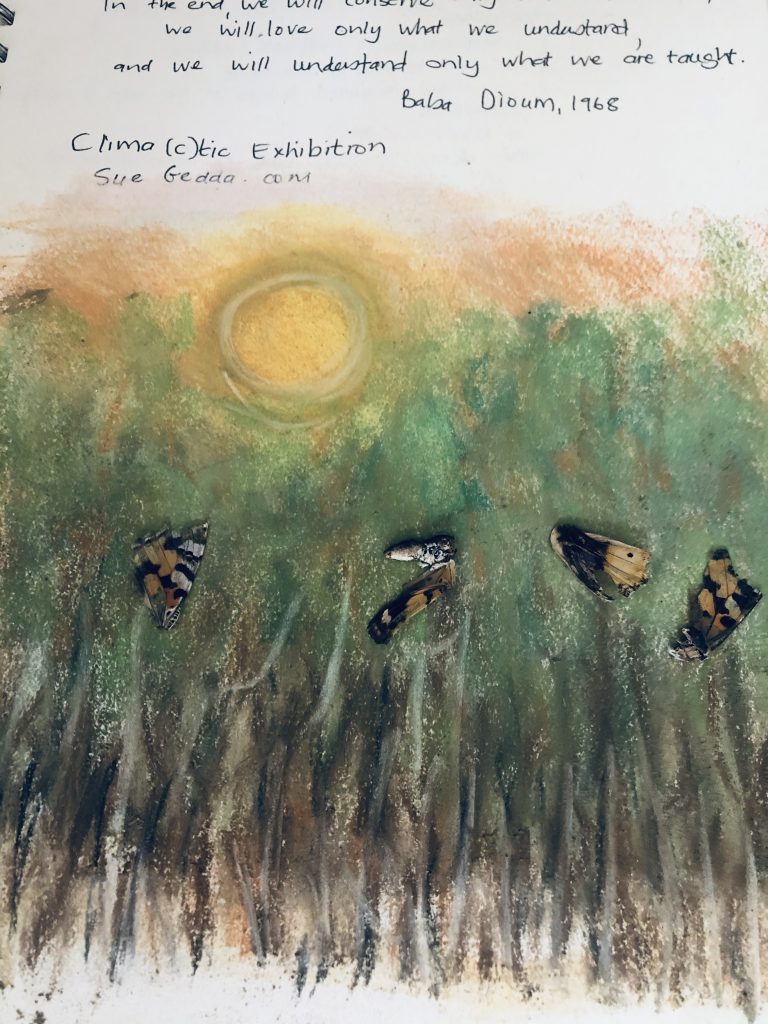
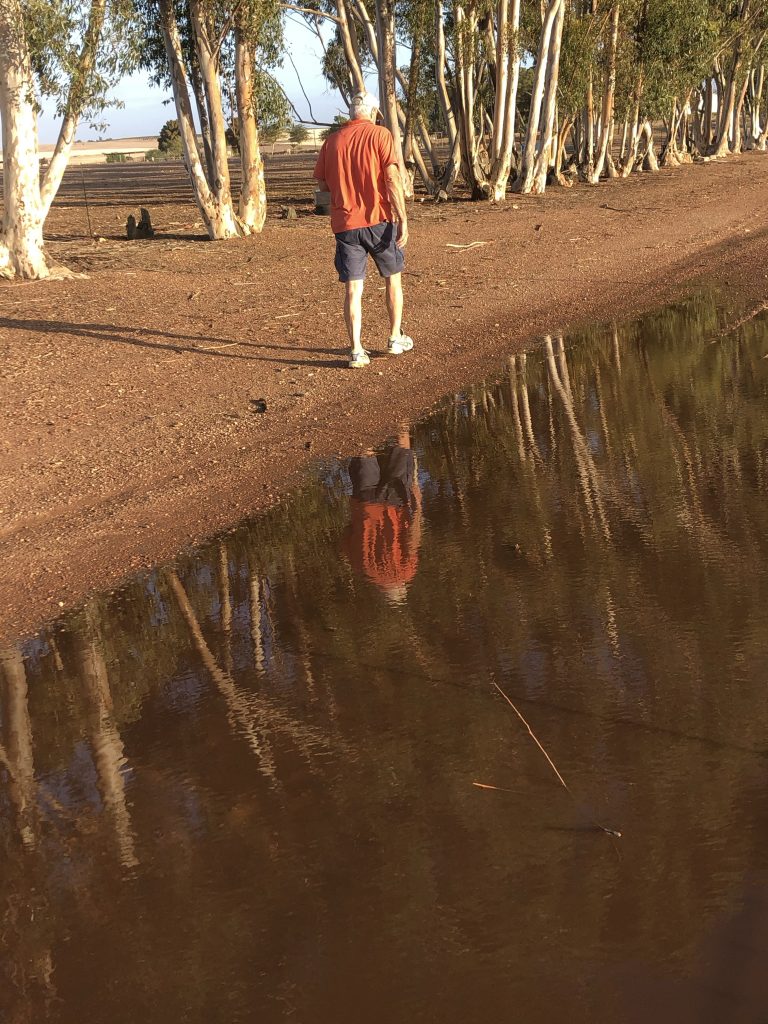
Interesting is that in both cases the trees are seen as invaders in the space they occupy. In Dubai these trees have been declared as aliens and may not be planted any longer. We stay in a development which was stopped after the 2008 financial crash – in a way nobody cares what will happen – the dream was shattered and we are stranded in a unfinished compound, which was supposed to be a little Venice of the UAE. This shows uncertainty of plans we make and how we adapt. These trees from the boundary which keeps us safe from unfinished water canals. The Eucalyptus trees on the farm are native Australian trees, and hardly any old farmstead in SA are without it – a reminder of the colonial influence of my home country. They are a threat to our natural water resources and need to be kept at bay – this short growth of trees should be removed – re used as fire wood. They are old and give a certain form to the landscape, as well as shade to the sheep during summer months.
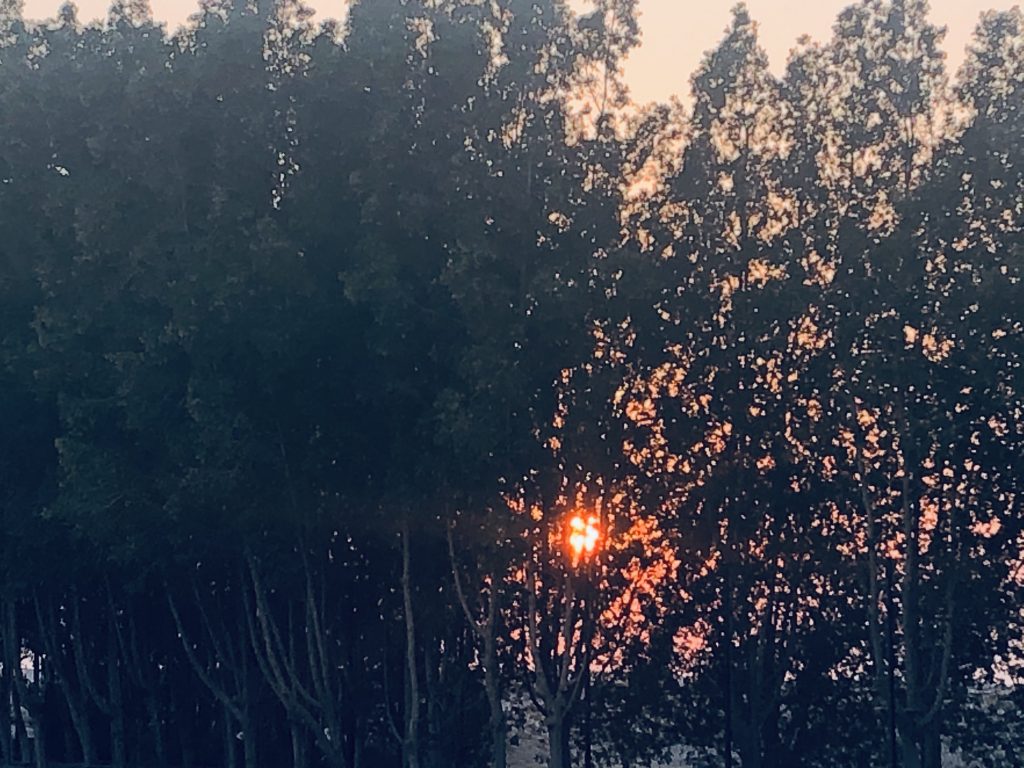
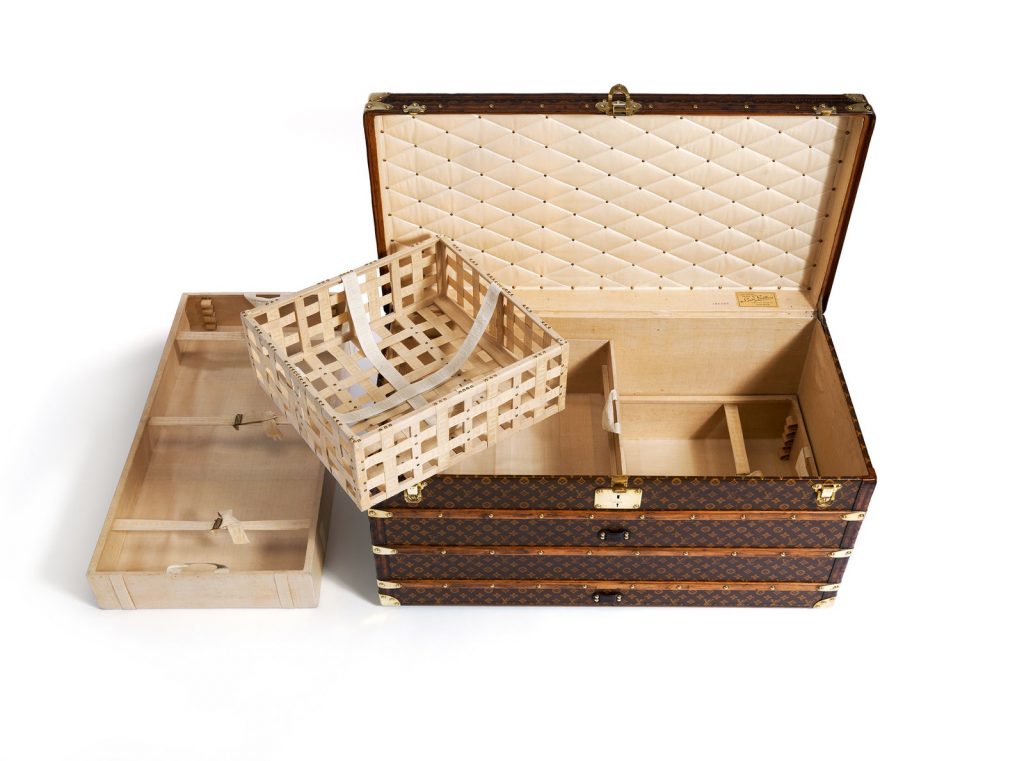
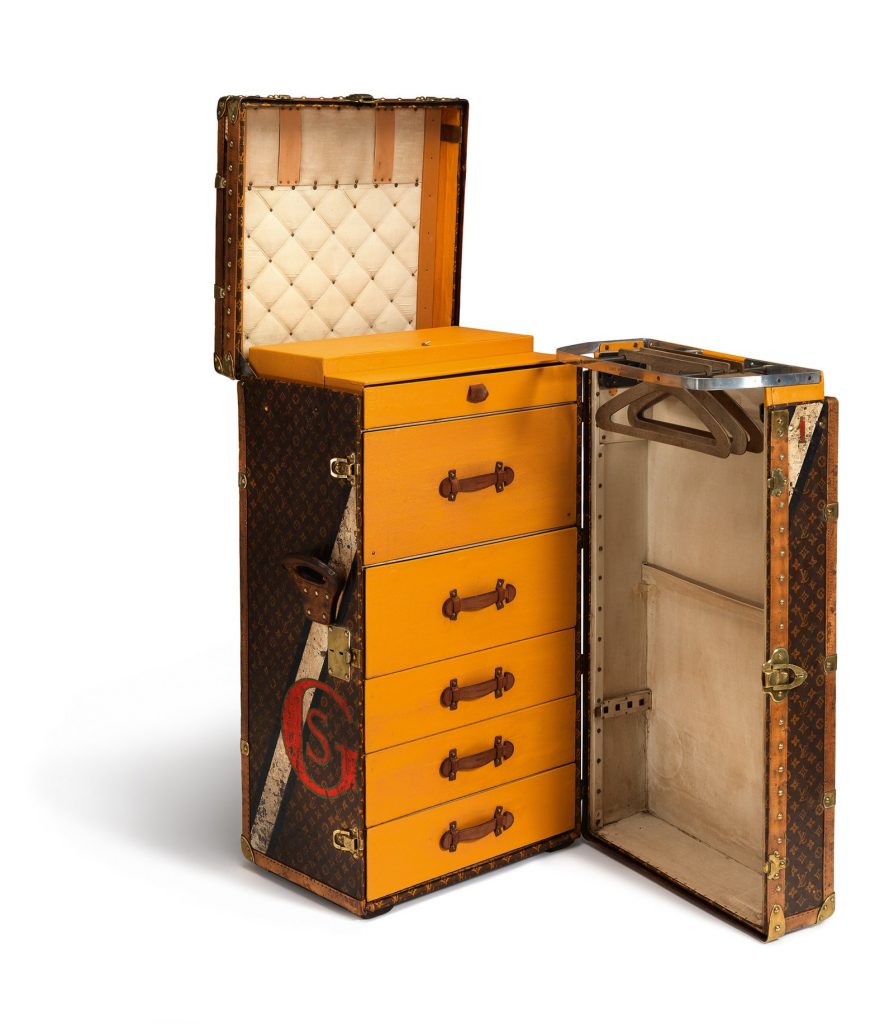
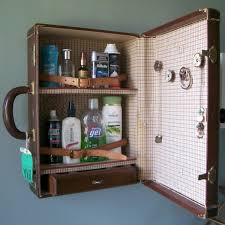


Fascinated in the way the Artist has placed her meaningful selective objects into her wardrobe case.
Whilst glancing and walking through her memory shelves of moments I became aware of pain, reality and happenings of life.
The Artist express the powerful influence of nature in life. She also simplifies life by placing her wardrobe case back into nature.
I enjoyed standing still by her GREAT Work.
Anel, thank you for taking your time to look and reply to my work. I appreciate your kind words and look forward to explore the topic further. Keep in touch, Karen